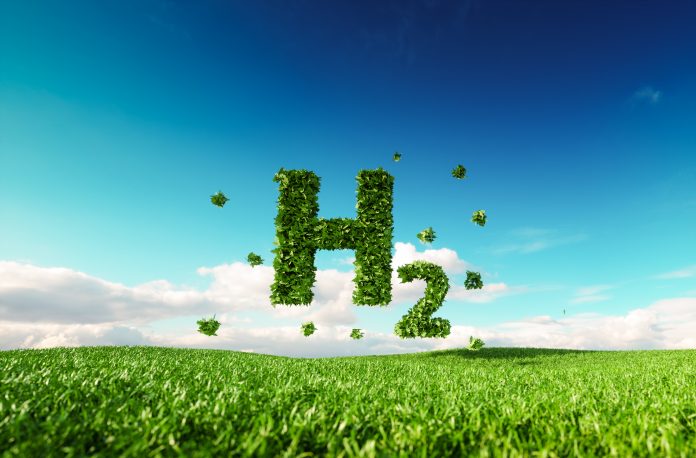Stephen Skinner, Professor of Materials Chemistry at Imperial College London, explores the possible routes available to produce clean hydrogen and ensure a low carbon future
With the continuing legislative drive to reduce worldwide dependence on energy generated through combustion of fossil fuels, it is imperative that new routes that are viable for the production, distribution and storage of clean hydrogen are developed. In the last quarter of 2020, there have been announcements of the desire to ban the sale of gasoline and diesel-powered vehicles in the UK from 2030 as part of the government “10-point plan for a green revolution”1. Whilst headlines have focussed on the phasing out of fossil fuel-based transport, there was a commitment to produce 5 GW of low carbon energy based upon hydrogen production. This initiative complements the recent work of the Henry Royce Institute in launching five technology roadmaps to target net-zero emissions, including materials for low carbon hydrogen generation2 which resulted from a national “materials for the energy transition” consultation.
Central to these plans to transition to net-zero carbon, using low carbon technologies, is the requirement to develop new materials solutions and technologies as part of an integrated energy infrastructure. One of the current leading options to produce clean hydrogen is through electrolysis. Many of the current electrolyser devices rely on a polymer exchange membrane (PEM) technology. Whilst these devices will produce zero carbon hydrogen at the point of delivery, there are further options that may offer greater efficiencies.
Solid oxide cell (SOC)
A leading contender to compete with the PEM technology is that of the solid oxide cell (SOC). In these devices a ceramic oxide, rather than a polymer membrane, is used and operated at elevated temperatures, catalysing the water-splitting process. The use of ceramic oxides has several advantages including the scalability of the individual cells, the flexibility of designs, from planar to tubular3, and the potential to develop reversible cells, with a fuel cell mode (energy production) as the forward process and electrolysis (hydrogen production) as the reverse mode, which can be coupled to an energy storage solution, such as high energy density batteries. This enables technologies to be developed to address a range of applications from portable/mobile devices through to large scale stationary plants. A further advantage of the solid oxide system is the potential to implement a co-electrolysis process in which both CO2 and H2O are separated to produce synthesis gas (CO/H2). This process in essence captures CO2 emissions and, through electrochemical conversion, the co-electrolysis process provides a low carbon transportable fuel.
EPISTORE
To achieve these overall goals of reducing carbon emissions and transforming to a zero-emission economy, it is absolutely essential that significant research, development and innovation of new materials and devices is undertaken, with an excellent example being the recent investment in the EPISTORE collaborative programme by the EU FET Proactive initiative. Through this programme colleagues throughout Europe will tackle the ambitious development of thin-film reversible solid oxide cells for ultra-compact electrical energy storage. These devices will be predominantly based on oxide ion-conducting ceramic membranes and will operate at reduced temperatures, paving the route to new markets. Reducing device operating temperatures requires innovation in both materials’ discovery and systems engineering.
H+ ion
One additional route to address the desire for solid oxide cells to operate at lower temperatures (300-600˚C) is to develop alternative membranes based on solid oxide proton conduction, with the charge carrying species, in this case, being an H+ ion rather than the O2- ion discussed in the devices above. The diffusion of the protonic species through the membrane is mechanistically similar to the oxide ion case, as both rely on crystal lattice defects, and require there to be oxygen vacancies. For proton conducting oxide ceramic devices, the challenge is in developing effective low temperature, high performance, low-cost catalysts. Considerable progress has been made in this field, particularly with the CoorsTek/Sintef partnership, with a claimed efficiency of hydrogen production of around 60-70%5.
Whilst the potential of electrolysis is promising there are a suite of alternative technologies that may also address the goals of reducing carbon emissions. One such approach is to use the concept of thermochemical water splitting6 in which a metal oxide is reduced at high temperature and re-oxidised under steam at a much lower temperature, producing hydrogen. Current materials require extreme temperatures (up to 2000˚C) for the reduction step which is a significant barrier for the technology. Current research is now directed towards materials with redox and catalysis properties that operate effectively in a lower and narrower temperature window.
Ammonia (NH3)
A final approach to be considered is the use of ammonia (NH3) as an energy carrier. Significant quantities of ammonia are produced annually and there is now a drive to exploit this resource, but also to revolutionise the production processes through clean nitrogen reduction. Developing novel new catalysts that are active towards ammonia conversion (ammonia “cracking”) would revolutionise the use of ammonia as an abundant hydrogen source. There is currently an infrastructure for the transport of ammonia, and thus one of the barriers to the adoption of hydrogen as a primary fuel source would be removed.
It is through new collaborative approaches that significant advances in clean hydrogen technologies will be achieved, combined with appropriate investment from government and industry alike, exploiting the leading capability of university researchers.
References
1 “The ten point plan for a green industrial revolution: building back better, supporting green jobs and accelerating our path to net zero”, HM Government, Nov. 2020 https://assets.publishing.service.gov.uk/government/uploads/system/uploads/attachment_data/file/936567/10_POINT_PLAN_BOOKLET.pdf (accessed 28/11/20)
2 Henry Royce Institute https://www.royce.ac.uk/news/royce-launches-roadmaps-to-help-deliver-net-zero-targets/ (accessed 28/11/20)
3 S. Mukerjee, R. Leah, M. Selby, G. Stevenson and N.P. Brandon, Life and Reliability of Solid Oxide Fuel Cell-based Products: A Review, In: Solid Oxide Fuel Cell Lifetime and Reliability; Critical Challenges in Fuel Cells, Eds.: N.P. Brandon, E. Ruiz-Trejo, P. Boldrin, Academic Press, 2017 pp 173-191
4 Y. Zheng, J. Wang, B. Yu, W. Zhang, J. Chen, J. Qiao, J. Zhang, Che,. Soc. Rev., 2017 46 1427
5 https://www.sintef.no/projectweb/nccs/research/low-emission-h2-production/#/ (accessed 28/11/20)
6 https://www.energy.gov/eere/fuelcells/hydrogen-production-thermochemical-water-splitting (accessed 28/11/20)
Note: EPISTORE is an EU funded collaborative project that will begin in February 2021, led by IREC Barcelona, with academic and industrial partners in the UK, Germany, France, Netherlands, Spain and Switzerland.

*Please note: This is a commercial profile











